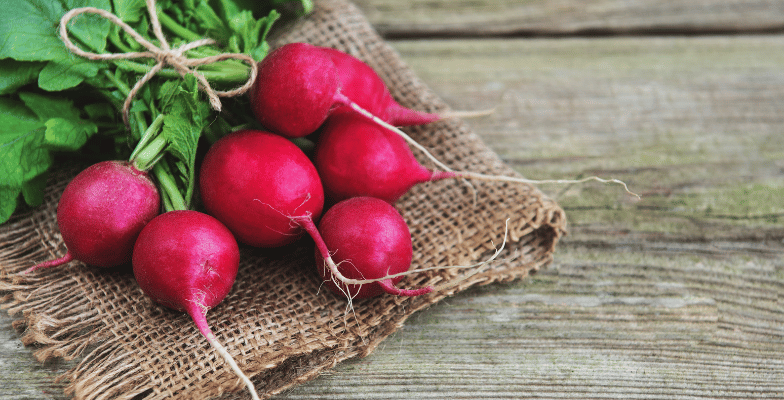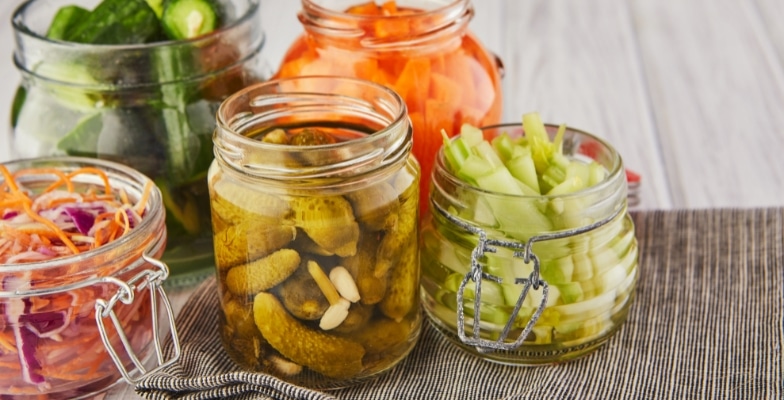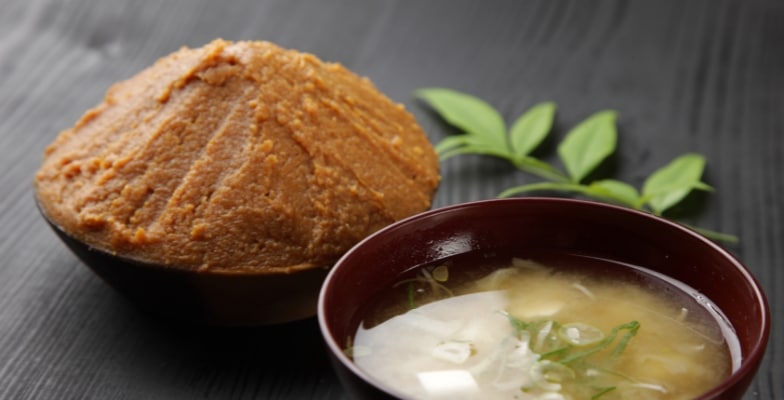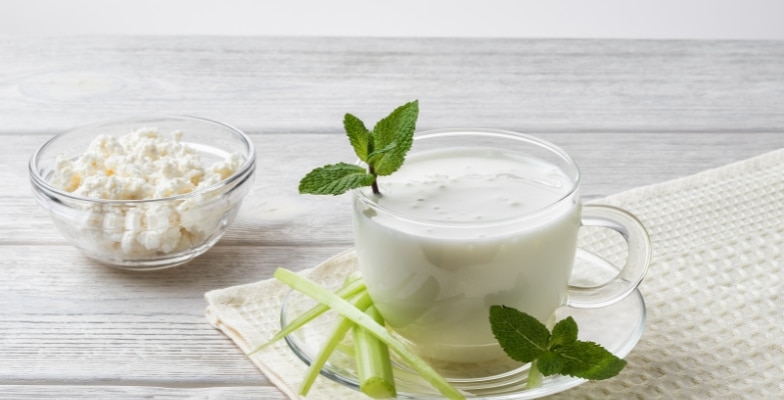Radish Nutrition | What Is Radish Good For?
- Introduction
- Radish Nutrition
- What Is Radish Good For?
- How To Eat Radish
- Radish For Weight Loss
- Radish Benefits
- Varieties Of Radish
- Precautions
- Conclusion

Introduction
Are you a vegetable lover? I adore vegetables. My boys say I must have been a goat in my last birth. Jokes apart, one of the vegetables I am very fond of is radish. After reading this article, I am positive you all will either rush to the grocery store to buy radishes or start growing them in pots or gardens.
Radish (Raphanus sativus) is a root vegetable in the mustard family (Brassicaceae), like kale, cabbage and broccoli. The radish is probably native to Southeast Asia or Central Asia. The ancient Greeks and Romans used it for food and medicinal purposes.
Radishes have crunchy flesh and an almost spicy, peppery taste. They vary in shape from short and round to long and narrow. Radishes have different skin colors, including red, black, white, yellow, pink, and purple, but their flesh is invariably white. The radish plant’s flowers, fruit, leaves, and seeds are used widely for their potent medicinal properties.
Radishes are not expensive and don’t require much cleaning or prepping, and one can quickly eat them raw. Radishes are easy to grow, offer a quick harvest (sometimes in as short as 30 days), help keep garden pests away and tend to crowd out weeds.
The white radish is very popular in India. It is known as muli in Hindi, mullangi in Tamil and Telugu, moolangi in Kannada, moola in Bengali, and muli in Marathi(different languages spoken in India.
Radish Nutrition
According to the USDA, radish contains B vitamins (thiamin, niacin, riboflavin, folate, and vitamin B6), vitamin C, vitamin A and vitamin K. It also provides the minerals iron, magnesium, phosphorus, and zinc. 1https://fdc.nal.usda.gov/fdc-app.html#/food-details/169276/nutrients
Radishes are a good source of many antioxidants and phytochemicals like beta carotene, lutein, glucosinolate and isothiocyanate.
Related Article: Phytonutrients Definition | Phytonutrients Foods And Chart
What Is Radish Good For?
If you’re unfamiliar with them, you may wonder what radish is good for. Radishes are packed with vitamins and minerals without many carbs or calories. They are healthy vegetables to add in moderation to any diet. They are:
Low In Carbohydrates
Radishes are a non-starchy, low-carb vegetable. One cup of sliced radishes will provide only 4 g of carbs, half of which are dietary fiber. For this reason, they can easily be a part of a diabetic diet. The fiber and water in radishes may also help increase satiety.
Related Article: What Is Fiber? Health Benefits, Food Sources And Daily Requirements
Non-Acidic
Radishes are not acidic and are trumpeted as a heartburn-relieving food in various cultures. They contain glucosinolates(also referred to as mustard oil), which might soothe the stomach and lower stomach acid production. 2https://www.sciencedirect.com/topics/medicine-and-dentistry/radish
Helps With Detox
Radishes may help the liver, one of our detox organs, stay healthy by assisting in bile and bilirubin production. They may also help remove excess bilirubin from the blood and prevent liver infections or ulcers. 3https://www.ncbi.nlm.nih.gov/pmc/articles/PMC4658983/
Provides Antioxidants
Antioxidants are beneficial as they can help repair oxidative stress caused by free radicals in the body. This stress can contribute to inflammation, obesity and other health concerns.
Research suggests that antioxidant compounds in radishes provide anti-diabetic power and reduce the risk of CVD. 4https://www.sciencedirect.com/science/article/abs/pii/S1756464615002224
How To Eat Radish
Radishes are not considered a superfood, but if we compare their ORAC value to fresh kale, they are both around 1,700. The ORAC (Oxygen Radical Absorbance Capacity) value is a method developed by scientists at the National Institute of Health and Aging (NIH) to measure different foods’ antioxidant capacities. 5https://www.phytochemicals.info/list-orac-values.php
To get the most nutrition from radishes, it is best to eat their bright-colored skin, as that is where most of the antioxidants are located. Not only are radishes healthy, but they also add a spicy flavor and crunchy texture to food.
Radishes make an excellent addition to a mixed salad along with other raw vegetables. But this is not the only way to eat radishes. There are several other ways.
Baked
One can bake or sauté radishes with garlic, herbs, and cheese for a delicious and healthy dinner option along with meats.
Sandwiches
One can add thinly sliced radishes to any regular vegetable or chicken sandwich.
Pickled Radishes
One may use pickled radishes and Chinese cabbage in kimchi (a famous traditional Korean appetizer of salted and fermented vegetables) to increase the nutritional value.
Salads
The texture, taste and crunchiness of radishes can add variety to plant and animal-based salads.
Indian Bread
Radishes can be grated and used as a stuffing in regular Indian bread (known as parathas) along with other herbs and spices.
Grilled
Round radish slices can be grilled with extra virgin olive oil or coconut oil and served as a side dish with beef, chicken, pork, or fish steak.
Creamy Yogurt
The peppery flavor of grated or thinly sliced radishes goes very well with creamy yogurt and works well as a delicious dip with fish or chicken. (Indians may call it raita.)
Healthy Snack
You can also make a great healthy snack of sliced, roasted watermelon and radishes with any dip of your choice. The zinginess of radishes goes brilliantly with the sour and creamy feta cheese dip.
Radish For Weight Loss
Are radishes good for weight loss? Here are a few of the measures that will help us decide.
-Low-digestible carbohydrate
-Low on the glycemic index (15)
-High in water content (100 g of radish contains 95.27 g of water)
-High in insoluble fiber (roughage)
Aside from being low carb with little effect on blood sugar levels, the fiber and water in radishes help to regulate bowel movements and increase metabolic efficiency. Hence radishes are an excellent dietary option for those who are determined to lose or control weight. 6https://www.myfooddata.com/articles/vegetables-high-in-water.php
Related Course:
Radish Benefits
May Reduce The Risk Of Diabetes
Radishes contain chemical compounds like glucosinolate and isothiocyanate that may help regulate blood sugar levels. Radishes also contain coenzyme Q10, an antioxidant that may prevent the development of type 2 diabetes. 7https://www.ncbi.nlm.nih.gov/pmc/articles/PMC5622774/
Anti-fungal & Anti-Microbial Properties
Radish is widely used in traditional medicine in various cultures to treat several diseases and disorders associated with microbial infections. The antibacterial activity of the different plant parts is mainly attributed to several isothiocyanates (ITC) compounds. 8https://www.ncbi.nlm.nih.gov/pmc/articles/PMC5066007/ , 9https://pubmed.ncbi.nlm.nih.gov/19182965/
May Help In Cancer Prevention
A study conducted in 2010 found that radish root extract contained several types of isothiocyanates that may eliminate cancer-causing substances and prevent tumor development. 10https://link.springer.com/article/10.1007%2Fs11130-010-0178-0 Radishes have certain antioxidants and flavonoids that are strong collaborators in the fight against the production of cancer cells. 11https://pubmed.ncbi.nlm.nih.gov/24231071/
Better Cardiovascular Health
Radishes are rich in antioxidants and minerals like calcium and potassium. Together, these nutrients help lower high blood pressure and reduce the risk of heart disease. Radish is also a good source of natural nitrates that improve blood flow. 12https://academic.oup.com/advances/article/2/1/1/4591636
Radish roots are considered suitable for patients suffering from liver trouble, gallbladder ailments, hemorrhoids (piles), jaundice, and an enlarged spleen. 13https://www.sciencedirect.com/topics/medicine-and-dentistry/radis
Varieties Of Radish
Several varieties of radishes are available year-round. They vary in size, taste, and color but share nutritional value. The most available and common ones are the following.
Round Radishes
These are the ones that pop into our minds when we think of radishes. The most available variety is red, which comes in white, pink, and purple shades.
Black Or Spanish Radishes
These have a genuinely black exterior that covers a snowy white flesh.
Chinese White Radishes Or Daikon Radishes
This variety is the most commonly available and widely known large radish.
French Breakfast Radishes
These are slightly extended versions of round radishes.
Watermelon Radish
They are named for their obvious resemblance to the watermelon fruit; they have a pretty reddish-pink interior and green skin.
Korean Radish Or Mu
This variety of white radishes has a firm and crunchy texture. Korean radishes are generally shorter, stouter, and sturdier than daikon and have a pale green shade halfway down from the top. They also have a more robust flavor, denser flesh, and softer leaves.
Precautions
Excessive consumption of radish should be avoided, as there may be a few side effects.
-Gastric irritation can occur due to sulfur compounds present in radishes that may irritate the stomach mucosa.
-An allergic reaction may arise, which usually begins at the fingertips. People allergic or sensitive to radishes may experience rhinitis (inflammation of the mucous membrane of the nose), contact dermatitis, or allergic asthma.
-Interference with hormone production in the thyroid can occur after consuming significant amounts of radishes if one has an iodine deficiency.
Conclusion
Radishes are packed with vitamins and minerals without many carbs or calories. They are healthy vegetables, and adding them to your daily diet will give you a nutritional boost and lend a zesty and spicy flavor to many recipes.
So, feel free to embrace radishes and add them to your diet in the most fun and unique ways possible.
What do you think about the article? Have any questions? Let me know in the comments below!

Skill-Based Education.
Global Recognition.
Powerful Community Building
Secure a certificate of completion in as little as a day by graduating from one of our free courses.
Get Access to Our Free Courses. No Credit Card Required.

Fabulous Body Membership
Your All-Access Pass to A Fabulous Body & A Rewarding Career
25+ Certificate Courses & Programs, All Included
15 Day Free Trial, 100% Money-Back Guarantee
About Kamini Thakar
Kamini is a very skilled writer/content creator. As a part of Fabulous Body for years, she has authored many articles really proving her prowess in acquiring and presenting knowledge about various health & nutrition topics.












Hi Kamini
this is Narender. You write crisply with meaningful content.
Thanks, Narender.